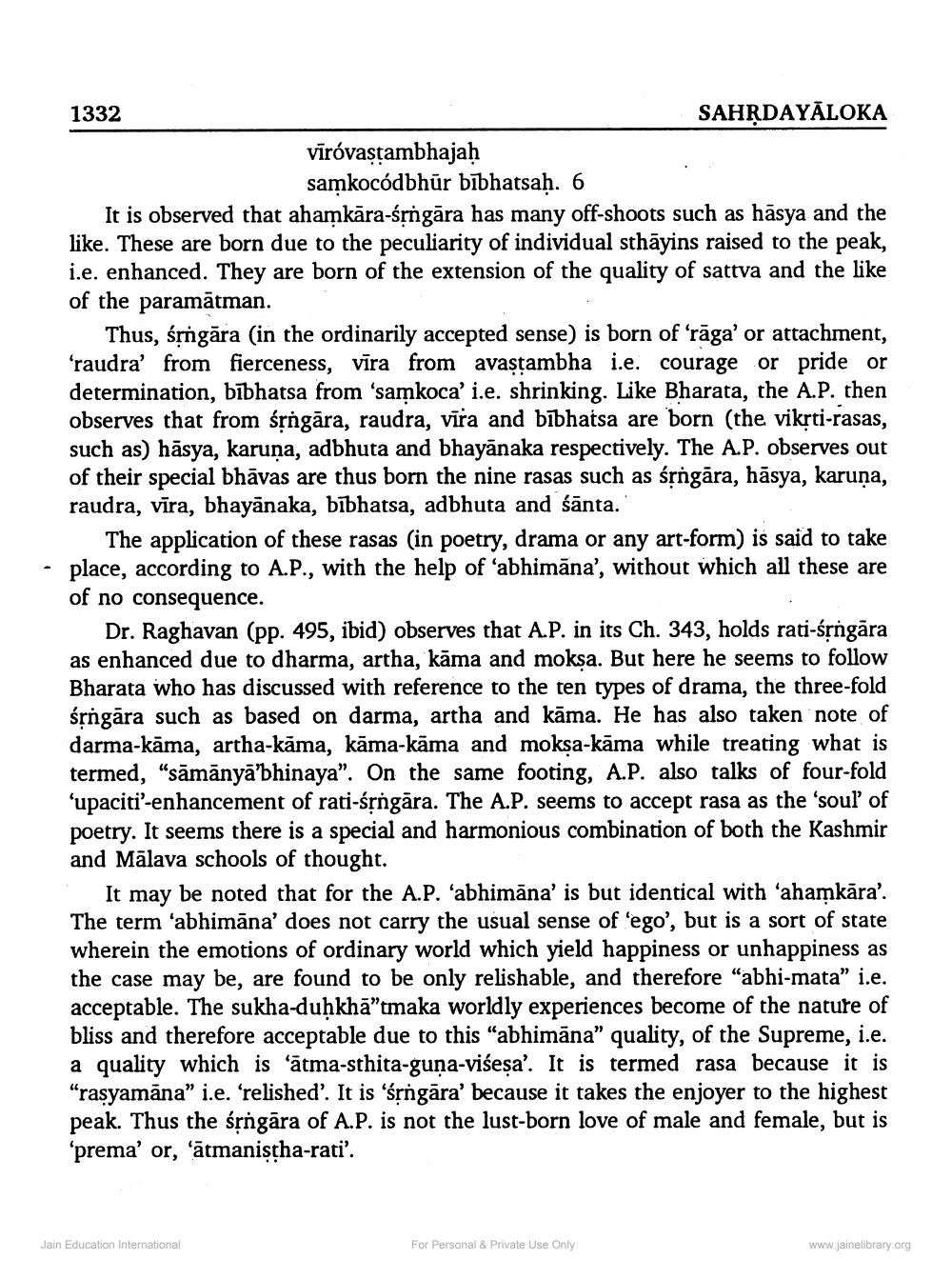________________
1332
SAHRDAYĀLOKA vīróvastambhajah
samkocódbhūr bībhatsaḥ. 6 It is observed that ahamkāra-śặngāra has many off-shoots such as hāsya and the like. These are born due to the peculiarity of individual sthāyins raised to the peak, i.e. enhanced. They are born of the extension of the quality of sattva and the like of the paramātman.
Thus, śộngāra (in the ordinarily accepted sense) is born of 'rāga' or attachment, 'raudra' from fierceness, vīra from avastambha i.e. courage or pride or determination, bībhatsa from 'samkoca' i.e. shrinking. Like Bharata, the A.P. then observes that from śộngāra, raudra, vīra and bībhatsa are born (the vikști-rasas, such as) hāsya, karuna, adbhuta and bhayānaka respectively. The A.P. observes out of their special bhāvas are thus born the nine rasas such as śrngāra, hāsya, karuna, raudra, vīra, bhayānaka, bībhatsa, adbhuta and śānta.
The application of these rasas (in poetry, drama or any art-form) is said to take place, according to A.P., with the help of 'abhimāna', without which all these are of no consequence.
Dr. Raghavan (pp. 495, ibid) observes that A.P. in its Ch. 343, holds rati-śộngāra as enhanced due to dharma, artha, kama and moksa. But here he seems to follow Bharata who has discussed with reference to the ten types of drama, the three-fold śrngāra such as based on darma, artha and kāma. He has also taken note of darma-kāma, artha-kāma, kāma-kama and moksa-kāma while treating what is termed, "sāmānya'bhinaya". On the same footing, A.P. also talks of four-fold ‘upaciti'-enhancement of rati-śrngāra. The A.P. seems to accept rasa as the 'soul of
seems there is a special and harmonious combination of both the Kashmir and Mālava schools of thought.
It may be noted that for the A.P. 'abhimana' is but identical with 'ahamkāra'. The term 'abhimāna' does not carry the usual sense of 'ego', but is a sort of state wherein the emotions of ordinary world which yield happiness or unhappiness as the case may be, are found to be only relishable, and therefore "abhi-mata" i.e. acceptable. The sukha-duḥkhā"tmaka worldly experiences become of the nature of bliss and therefore acceptable due to this "abhimāna" quality, of the Supreme, i.e. a quality which is ‘ātma-sthita-guna-višeşa'. It is termed rasa because it is "rasyamana" i.e. 'relished'. It is 'śrngāra' because it takes the enjoyer to the highest peak. Thus the śộngāra of A.P. is not the lust-born love of male and female, but is ‘prema' or, 'ātmanistha-rati'.
Jain Education International
For Personal & Private Use Only
www.jainelibrary.org




